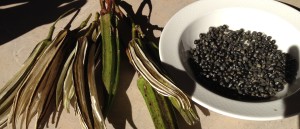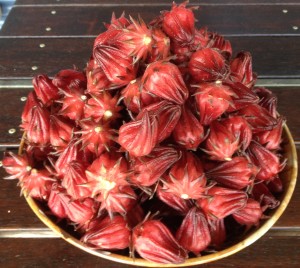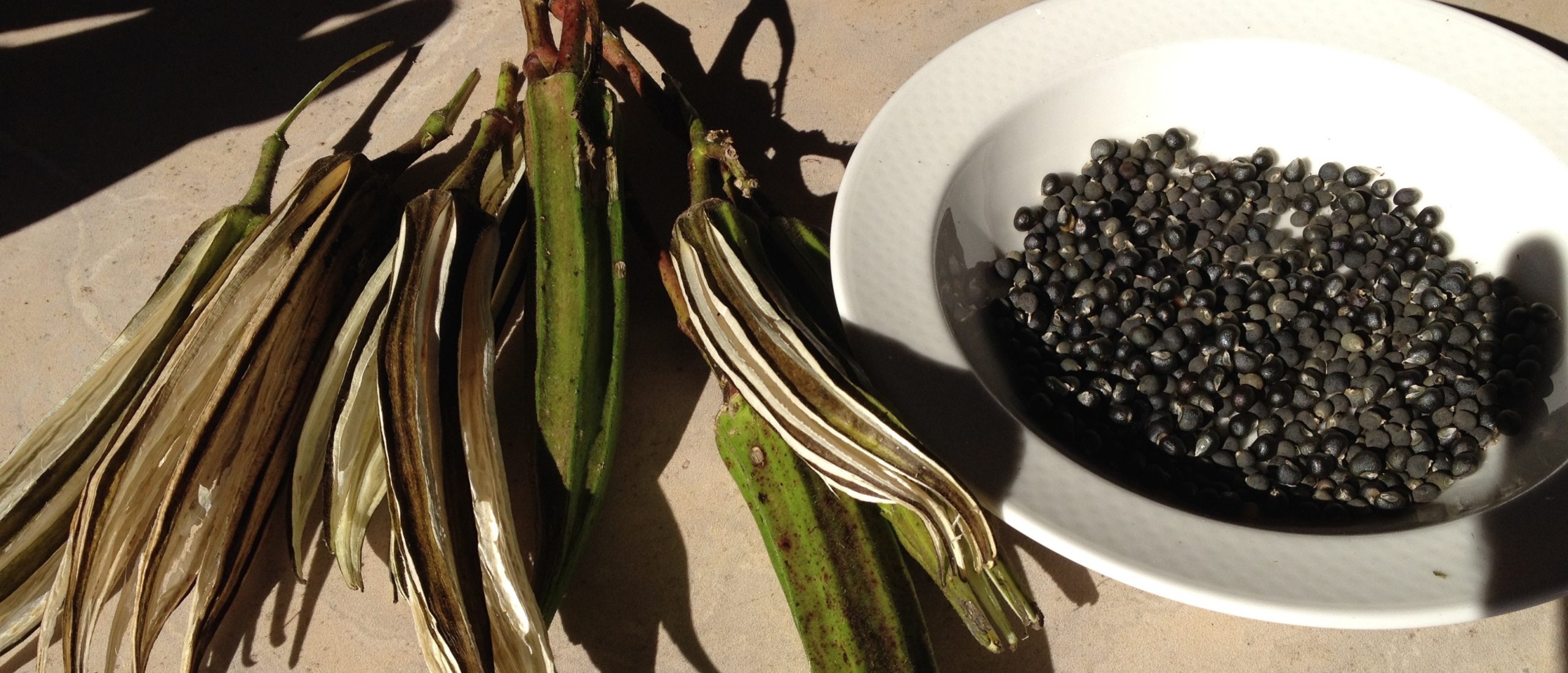Seed saving is important for all sorts of reasons. There is the worthy argument that you are preserving heritage cultivars and sticking it to multinationals, but a more practical reason is that it gives you the opportunity to try out as much planting as you care to.

My two star performing hibiscus relatives, okra and rosella, have just provided me with more seed than I could use. The okra pods are in the main photo. The plants had grown more than two metres tall and had given us a massive crop, so I left the top pods to mature. It’s easy to split them open and let the seeds fall into a bowl, and I must have towards a thousand seeds now. That would be a substantial hillside of okra next year, but I might be able to give some away.
I think dried okra pods have a great look. Someone more artistic than I could probably make great dried arrangements from them.
The rest of the pods made good chicken food. The green ones with their soft seeds are probably more digestible. The dried seed is very hard and might be improved by sprouting.
Rosella is even more productive of seeds, as you discard the seed pods for eating and keep the red calyces. The round seed pods are filled with hard black seeds very like okra seed.

Here’s my latest pick of rosellas, enough for cordial, jam, a few hundred saved seeds and chicken feed.
I intend to sow plenty of okra and rosella in Spring, but as I learned in my first year here, the vagaries of the weather can make or break a field crop. So with a good stock of seed I should be able to cut my losses if the seedlings fail, and re-sow in hope of better conditions.

